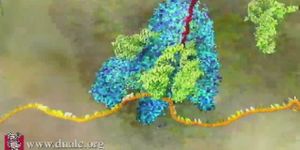
A rare and stunning creature may soon go the way of the dodo bird if scientists are correct in their predictions. The blue-eyed black lemur, Eulemur Flavifrons, could vanish soon if current trends continue. The blue-eyed black lemur is currently certified as "Critically Endangered" the highest categorization on the International Union for Conservation of Nature's Red List of Threatened Species.
The history of this beautiful creature has evolved steadily, even as their numbers have dwindled. It was originally classified as a subspecies of the black lemur, Eulemur macaco flavifrons, but was reclassified as a species in it's own right in 2008 after a research paper was published in the International Journal of Primatology detailing the diversity of the species and Madagascar. Even before this clarification wildlife conservationists have known for decades that the animal was at risk for extinction.
It first appeared on the IUCN Red list as "Endangered" in 1986 and was upgraded to the status of "Critically Endangered" in 1996. The blue-eyed black lemur is not the only species of lemur to be at risk either. Of the 103 known species, 19 are classified as Vulnerable, 52 as Endangered and 23 are Critically Endangered. Statistically speaking this makes the lemur the world's most endangered primate.
The risk is entirely due to the loss of the animal's natural habitat. In order to clear land for farming, developers use the devastating "slash and burn" approach, which decimates the forest where most lemurs live. Their diet consists mostly of fruit, pollen and nectar, so the rainforests of Madagascar are a rich but quickly disappearing habitat for the species. Because lemurs will also eat crops if they are near farmland, farmers wanted to rid the area of lemurs to protect crops. Ironically, the lemur is actually responsible for pollination of many naturally growing rainforest fruits because they do not eat the seeds, but rather will spread them. In addition they pollenate many plants when they consume the nectar and pollen from the flowers of many plant species.
Recent predictions about the blue eyed species being at risk of disappearing in just over a decade come from a research paper written by Maria Volampeno of the University of KwaZulu-Natal in Pietermaritzburg, South Africa and some colleagues in Madagascar which was published in the African Journal of Primatology. They studied the risk by using a technique called Population Viability Analysis, or PVA as it is known. The group analyzed data about blue-eyed Lemurs in the Ankarafa Forest in the Sahamalaza Peninsula National Park. Using statistics on population, reproduction, lifespan along with different scenarios of development and habitat loss rates, the team produced models that showed the species could go extinct as soon as 11 years from now. While they created simulations with varying amounts of human impact and lemur reproduction rates, every one of the models showed the species dying out within a century at the latest.
The study authors stressed that while their findings were created with accepted analysis techniques, more study is needed to further narrow down the exact risk to the species. They called for stricter conservation measures such as restrictions on slash and burn agriculture, stepped up enforcement of illegal logging and harsher penalties for poaching.
 A rare and stunning creature may soon go the way of the dodo bird if scientists are correct in their predictions. The blue-eyed black lemur, Eulemur Flavifrons, could vanish soon if current trends continue. The blue-eyed black lemur is currently certified as "Critically Endangered" the highest categorization on the International Union for Conservation of Nature's Red List of Threatened Species.
A rare and stunning creature may soon go the way of the dodo bird if scientists are correct in their predictions. The blue-eyed black lemur, Eulemur Flavifrons, could vanish soon if current trends continue. The blue-eyed black lemur is currently certified as "Critically Endangered" the highest categorization on the International Union for Conservation of Nature's Red List of Threatened Species. 







